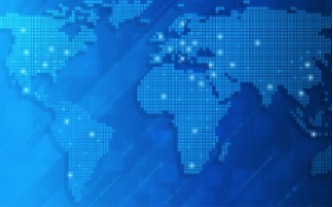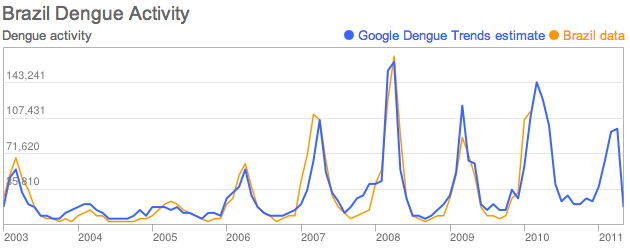The first multilateral agreement concluded since the creation of the WTC was adopted by consensus during the Bali ministerial conference, on December 2013, attended by the WTC members. This is the Trade facilitation agreement that will enter into force upon ratification by the two-thirds of the WTO members. As at December 16, 2015, 63 ratifications on 162 had been obtained. Seven African States ratified the agreement: Botswana, Ivory Coast, Kenya, Mauritania, Niger, Togo and Zambia. The agreement is divided into three sections and approaches amongst others release and clearance of goods, cooperation between border Agencies and Customs cooperation in general. Besides, it provides for Special and Differential Treatment (SDT) measures that enable developing countries and least developed countries (LDCs) to determine their implementation pace of the provisions and to notify any external reinforcement needed. Moreover, it provides trade facilitation committees. A mechanism launched on July 22th, 2014 by the WTO Chief Executive Roberto Azevêdo and operational on November 27th, 2014, aims at supporting the developing countries and LDCs in the implementation process of this agreement.
The 2015 world trade report, entirely dedicated to the analysis of the TFA, estimates that the implementation of the agreement would lead especially to the annual increase of the world exportations by 1 000 billions of dollars and a reduction of the trade costs between 9.6% and 23.1%. The developing countries and the LDCs are considered as the major beneficiaries of the TFA. Indeed, more than a reduction of trade costs of almost 16% (18% for manufactured goods and 10.4% for agricultural goods), those countries will take significant advantage of the diversification of their exportations in terms of goods and partners, favored by the agreement.
The African regional trade agreements (RTAs)
The RTAs are reciprocal trade agreements between at least two partners. According to the WTO statistics, the Free Trade Agreements (FTAs) and the partial-scope agreements represent 90% of those RTAs, compared with 10% for Customs unions. The eight African Regional Economic Communities (RECs) recognized by the WTO are registered and reported as RTAs.
Some African States or regions concluded interregional agreements with States or regions members of WTO. For instance, the European Union (EU) and South Africa signed on October 11th, 1999 a bilateral free trade agreement on goods. This RTA, recognized by the WTO and entered into force on January 1st, 2000, includes tariff quota, Customs procedure and balance of payments measures. Ivory Coast also concluded with EU a RTA whose scope and fields are similar to EU-South Africa ones. This agreement was signed on November 26th, 2008 and entered into force on January 1st, 2009. So is the agreement between EU and Eastern and Southern Africa signed on August 29th, 2009.
The Preferential Trade Arrangements (PTAs) with Africa
The PTAs are unilateral trade preferences. African States benefit from several PTAs through arrangements in favors of LDCs. Between 2002 and 2012, the LDCs exported at least 72% of their goods towards partners with whom they have PTAs[1] : in a decreasing order of the percentage of exportation, those partners are the EU, the USA, China, India and Japan. The EU has granted almost 100% duty and quota free access to its market for all the LDCs since 2001. Since 2010, China has given duty quota free access for 60% of tariff lines to forty LDCs. India grants progressive duty and quota free access in order to reach 85% of the tariff lines in 2012. As for Japan, since 2008, nearly 98 % of tariff lines have benefited from duty and quota free access to its market.
The USA have not concluded any specific PTA with the LDCs. Nevertheless, they have set up a unilateral regime in favor of sub-Saharan States through the “African Growth and Opportunity Act” (AGOA). This act promulgated on May 18th, 2000 and notified to GATT/ WTO on January 10th, 2001 grants duty free access for goods from “D” code in the “Special” column of the Harmonized Tariff Schedule, as long as they respect the rules of applicable origin.
As the AGOA was due to expire on September 30th, 2015, WTO General Council authorizes its expansion. This is the AGOA 2.0 whose success depends on many challenges. [2]
2. The eventual conflicts between agreements and African challenges to international agreements.
Contradictions between the RTAs, foundations of the African REC
The regional agreements create rules, in particular in regional trade, that is supposed to be implemented to all the signatory States. However, in practice, it is noted that the multiplication of trade regimes could point out some inconsistencies or be an obstacle to their efficacy. Thus, in 2011, the Southern African Development Community (SADC), of the Eastern African Community (EAC) and of the Common Market for Eastern and Southern Africa (COMESA) had some member States in common, but who implemented the trade regime of one organization to the expanse of others’ ones. Fourteen COMESA members on nineteen obeyed the rules of the free-trade treaty; four members remained at the stage of the law preceding the preferential trade area [3]. The five member States of the EAC were part of the REC Customs union in order to set up a common market. Lastly, twelve of the fifteen members of the SADC implemented the terms of the agreement, launched in 2008. The identification of those overlaps leads the three RECs to start discussions in order to create a common free-trade area.
Generally, the treaties of regional organizations provide for how to deal with the contradictions of the different law regimes. Let’s see the example of the West African Economic and Monetary Union (WAEMU) and the Organization for Harmonization of Business Law in Africa (OHADA) which includes 7 of the 17 member states of the first one. The treaties of the two organizations consider that the acts adopted in each organization prevail on national Law (article 6 of the WAEMU treaty and article 10 of the OHADA treaty) without any mention of supremacy of one treaty over the other [4]. Yet, some of their areas of responsibility overlap: the OHADA is supposed to govern business law while the WAEMU treaty lends authority to itself to adopt any rule needed to achieve its objectives in the area of economic, monetary, sector policies or the common market, an area which can include business law.[5]
Incompatibilities with the international system
WTO encourages the creation of regional organizations as they are regarded as a mean to achieve the development objectives. However, they have to respect WTO rules. In theory, all the member States have to apply the same trade treatment the other member States, even if in practice the PTAs derogate from this principle.
The implementation of the WAEMU Common Customs Tariff (CCT) in 2015 revealed how hard it could be to reconcile Community and international commitments. Indeed, the CCT imposes to the each WTO member State not to raise the rate of Customs duty beyond a certain level, called “the bound rate”. The rates applied in reality were often lower, especially for agriculture. Thus, Nigeria had a bound rate of 150% for agricultural goods, compared to an applied rate of 33.6%; the Senegal bound rate was 29.8% while Ivory Coast one was 14.9%. The new WAEMU CCT fixed to 35% on agricultural good placed those countries automatically beyond the rate that they committed not to exceed [7]. Even if some mechanisms, like the payment of compensation, make possible the cohabitation of the two norms, one can note easily that regional commitments could enter into conflict with the engagements within other systems.
Besides, the European Union seems at first sight to approach the EPA negotiation more logically as she talks with regional groups: central Africa, Eastern and Southern Africa, Western Africa, Southern African Development Community and East Africa Community. This multiplicity of interlocutors shows many limits: the members of the COMESA for example, are divided into 3 regional groups that negotiate separately the terms of the EPA related to them, although the COMESA countries share the same objective of common market. Moreover, as the EPA is a reciprocal but asymmetrical agreement between the EU and the African countries, he aims at fostering trade between the two areas and minimizing the tariff barriers. Even if the African countries keep benefiting from derogations to protect their weak economies from the concurrence of the strong Europe, one can understand that forwards low Customs duties could conflict with rules like the CCT fixed by some regions and be inferior to the tariffs practiced within a region, favorishing Africa-Europe exchanges at the expanse of intra regional exchanges.
Which stakes for Africa in front of this diversity of agreements?
In its 2015 report on industrialization through trade, the United Nations Economic Commission for Africa evokes the importance, and even the urgency, to implement a mega-regional agreement specific to Africa to boost its economic positioning. Indeed, the Commission studies shows that an effective implementation of the non-African mega-regional trade agreements, like the transatlantic trade and investment Partnership (TTIP), transatlantic partnership and the global regional economic partnership, results to the increase of one thousand of billion dollars by 2020, of the member States exportations. In the contrary, it would lead to a fall of the African exportations of some 2.7 billions of dollars because of the intensity of the competition and the attractiveness for markets covered by those mega-regional agreements. However, this trend could be reversed if Africa gets its own continental free trade area (CFTA) because its exportations would increase of some 40 billions of dollars, through an acceleration infra-regional trade. The CFTA implementation is a current project: African Heads of States and Governments have pledged to the acceleration of its implementation by 2017.
On June, 10th, 2015, the COMESA, SAEC and EAC Heads of States and Government, gathered in Sharm El Sheikh in Egypt, launched the tripartite free-trade area (TFTA) that set up an integrate market of 26 countries, of a population of 632 millions habitants representing 57% of the global African population. This TFTA is certainly a critical step of the African CFTA implementation process as it represents a global GDP of 1.3 billions of dollars (2014) which is 58% of the Africa GDP.
The commitment of African countries in those different agreements demonstrates before all the evident willingness to integrate more in the world trade and to benefit from it to accelerate their development. However, they fail to achieve the expected results and sometimes they may constitute a constraint for the continent. To benefit fully from this global trade opening, Africa needs to reinforce its production capacities, thus to modernize the trade infrastructure and to mobilize the financial resources.
.
Translated by Mame Thiaba Diagne
[1] Economic Commission for Africa, 2015, « Industrialization through trade », annual economic report on Africa.
[2] United-Nations, African Union, 2014 « How ‘AGOA ‘2.0’ could be different “
[3] TradeMark Southern Africa, 2011, « Aid For Trade Case Story : Negotiating the COMESA ‐ EAC ‐ SADC Tripartite FTA », Pretoria
[4] IBRIGA (LM), 2006, “The juridictionalization of the integration process in West Africa”, University de Ouagadougou
[5] KONATE (IM), 2010, “The OHADA et the others community regulations: UEMOA, CEMAC , CIMA, OAPI, CIPRES etc.”.
[6] DIOUF (EHA), 2012, “New CEDEAO Common external tariff and individual commitments of its members in WTO: overwhelming incompatibilities”, Passerelles, Part 13 – number 3.
[7] Ibid.




